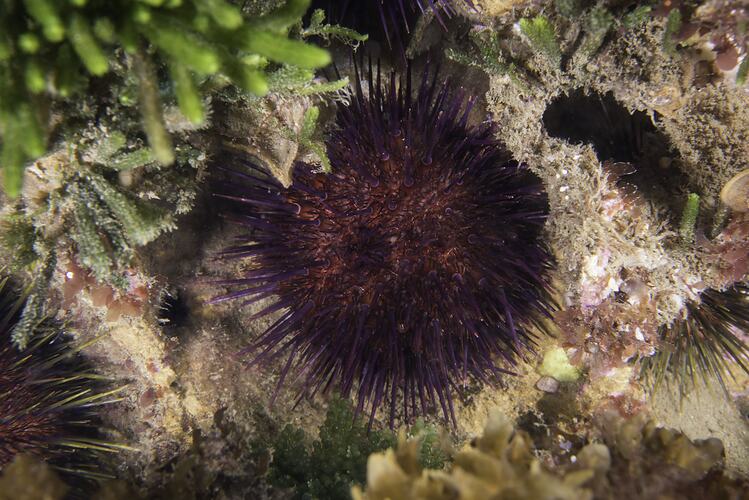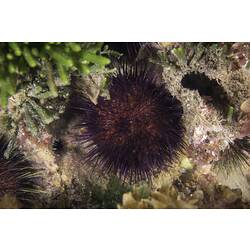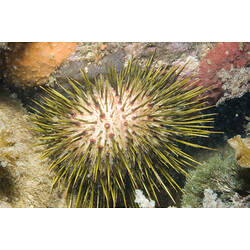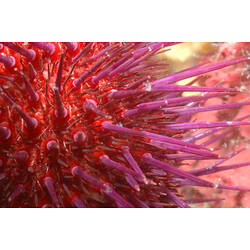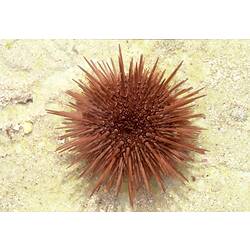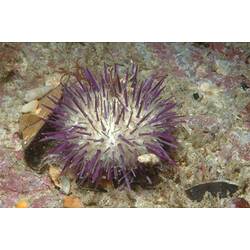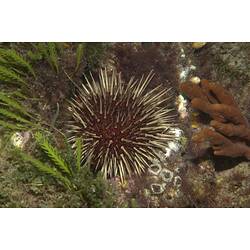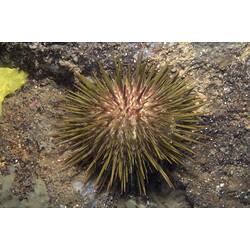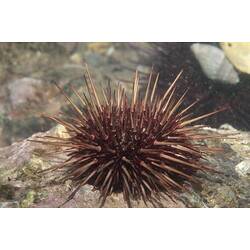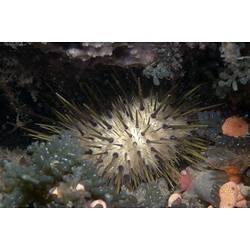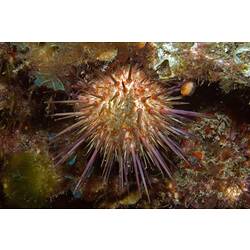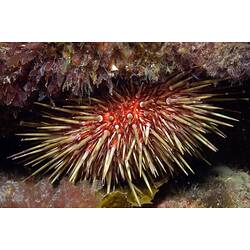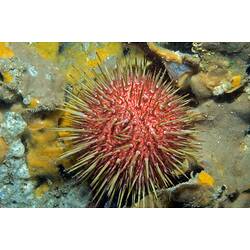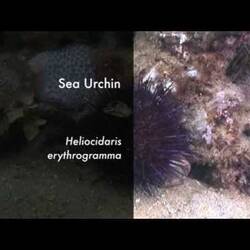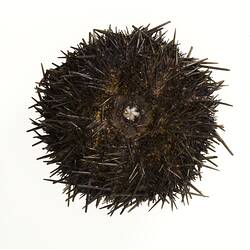General Description
Body dome-shaped with long spines. Shell (test) and spines mauve, green or white. Test up to 9 cm across.
Biology
These sea urchins eat algae. They can form large groups (barrens). Their gonads and roe are a delicacy in a number of European and Asian countries. It is probably the most common species of sea urchin in temperate waters.
Distribution
Southern Australian coasts.
Habitat
Reef and rubble areas, up to depth of 35 m.
More Information
-
Animal Type
-
Animal SubType
-
Brief Id
Purple, dome-shaped body, long spines.
-
Colours
Purple, Brown
-
Habitats
-
Diet
Herbivore
-
Diet Categories
Algae
-
Hazards
Spines can puncture skin. Venom status unknown.
-
Endemicity
-
Commercial
Yes
-
Conservation Statuses
CITES: Not listed, FFG Threatened List: Not listed, DSE Advisory List: Not listed, IUCN Red List: Not listed
-
Depths
Shore (0-1 m), Shallow (1-30 m)
-
Water Column Locations
On or near seafloor
-
Taxon Name
-
Scientific Author
(Valenciennes, 1846)
-
Common Name
Sea Urchin
-
Phylum
-
Subphylum
-
Class
-
Order
-
Family
-
Genus
-
Species Name
erythrogramma
